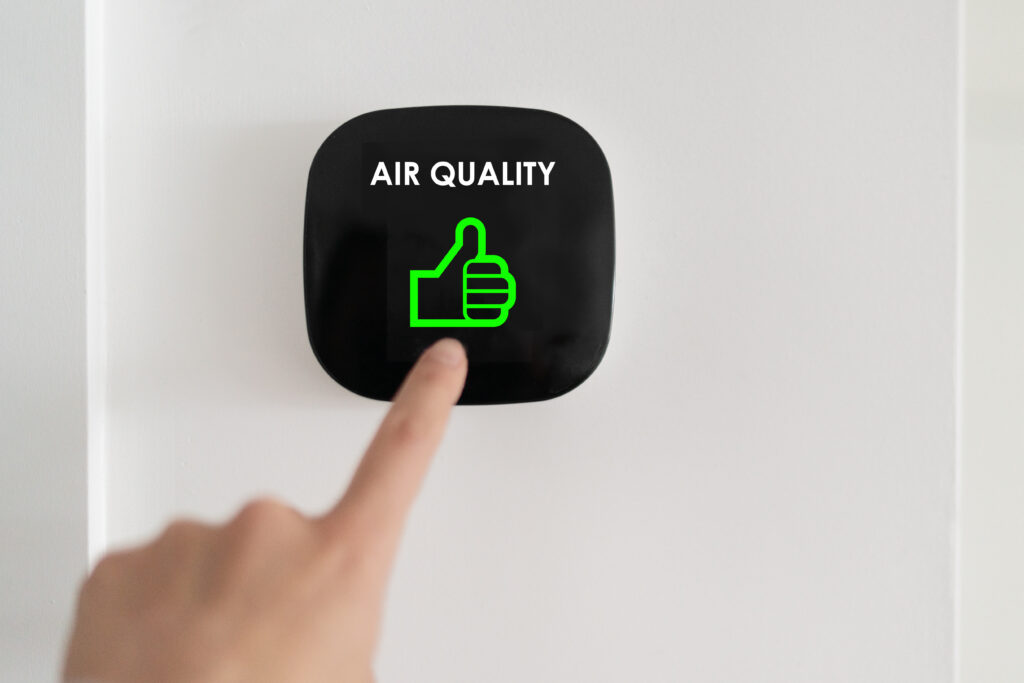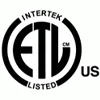Improving Indoor Air Quality with Innovative Solutions
Excess humidity can have detrimental effects on your health and well-being. Moist interior air is likely to contain harmful particles like dust mites, mold, mildew, and more that can trigger asthma and allergy symptoms(1) as well as other health problems. High humidity levels can also lead to unpleasant odors, mold growth, and damage to your indoor spaces. Utilizing a dehumidifier can remove extra moisture from the air and help you create a healthier, more comfortable home environment. They are one of the best ways to improve indoor air quality(2) or IAQ.

How Do Dehumidifiers Work? Dehumidifiers Explained
Dehumidifiers operate(3) using either refrigeration or absorption/adsorption mechanisms. Refrigeration dehumidifiers cool the air by drawing in warm, moist air which passes over cold coils. When the air temperature lowers to the dew point, moisture condenses on the coils and drains either into a tank to be periodically emptied (portable dehumidifier) or drains through existing plumbing. The dried air, which is slightly heated naturally during the dehumidification process, is then released into the environment, producing a more comfortable IAQ. Dehumidifiers can maintain optimal humidity levels within a space by continuously cycling air through the dehumidification process.
On the other hand, absorption/adsorption(3) dehumidifiers draw moisture with a rotating wheel made of water-holding material until it is either fully saturated into (absorbed) or onto (adsorbed) the material. The material is “squeezed” to remove the moisture, heating elements dry off the wheel and dryer heated air is released back into the room. Both absorption and adsorption dehumidifiers have their advantages and are commonly used in specific applications where refrigerative dehumidifiers may not be suitable.
Dehumidifiers work in a repeated cycle. By understanding that cycle, we can better understand the science behind dehumidifiers and how they work to increase air quality, defend from the growth of mold and mildew, and protect your home’s structure along with the furniture and appliances inside.
Simplified Refrigeration Dehumidifier Cycle Explanation
Air intake: A dehumidifier draws in air from the surrounding environment using a fan.
Cooling coils: The incoming air passes over coils that use a refrigerant or a similar cooling mechanism. Once the air temperature lowers below the dew point, the moisture in the air condensed into water droplets.
Water collection: The condensed water droplets collect on the cooling coils and drip down into existing plumbing within the dehumidifier, then through the drain, and then into a collection tank or a drainage hose to remove the water.
Warm air release: The air, now having lost some of its moisture, is slightly reheated by passing over warm coils before being released back into the room. This helps maintain a comfortable room temperature.
Humidity control: Dehumidifiers are equipped with a humidity sensor, known as a humidistat, that monitors the moisture level in the air. Once the desired humidity level is reached, the dehumidifier will cycle off until the humidity increases again, then it will cycle back on.
Improving Air Quality Through Dehumidification
Dehumidifiers are essential for improving indoor air quality by combating excess moisture. They effectively prevent mold and mildew growth(4), reduce allergens, and alleviate musty odors. In-wall dehumidifiers offer an additional advantage of staying tucked out of the way and maintaining interior design integrity.
Studies suggest that dehumidification systems improve indoor air quality. It should be noted that the use of liquid desiccants(5) can be even more effective than refrigerant dehumidifiers in removing harmful substances like volatile organic compounds (VOCs are gases emitted into the air from products or processes), neutralizing bacteria and viruses, and capturing particles in the air. Moreover, liquid desiccant dehumidification technology also reduces energy usage. A sustainable solution to improve IAQ is solar-powered liquid desiccant dehumidifiers, which take advantage of the sun’s heat. Solar heat gain is a significant factor in dehumidifier design(6).
Another nature-based solution that shows promise in enhancing IAQ is the cultivation of microalgae in closed photobioreactors(7), or enclosed vessels that encourage photosynthesis through the consumption of CO2 and other air pollutants. This process not only helps treat wastewater, it cleans the air – however it is not effective in dehumidification.
Researchers are focusing on these innovative methods to improve indoor air quality using greener and more sustainable technology.
Banishing Mold and Mildew with Dehumidifiers
Mold and mildew are never wanted in your homes and can cause health issues along with damage to your HVAC system and home’s interior and structure. This can be a very expensive problem to fix if action is not taken early on. Luckily, dehumidifiers offer an effective solution to fight off these moisture-loving culprits and protect your home’s structural integrity before mold becomes a hazard.
Dehumidifiers continuously monitor the humidity level in the room, ensuring that it always remains within a safe range. When the humidity exceeds the desired level, the dehumidifier kicks into action, extracting moisture until the ideal humidity is restored. This control mechanism prevents mold and mildew growth, which thrives in humid environments where relative humidity is above 60°.
By reducing the humidity, dehumidifiers create an environment that is inhospitable for mold and mildew. These fungi require moisture to grow and reproduce, and by depriving them of the excess moisture they need, dehumidifiers make it difficult for mold and mildew to establish a foothold in our homes.
Innovative Dehumidifiers: Your Solution for High-Quality Dehumidification
Choosing the right dehumidifier is crucial for improving indoor air quality and maintaining optimal humidity levels.
Innovative Dehumidifiers offers a range of dehumidification systems, including the IW24 In-Wall and On-Wall Dehumidifiers with Bi-Polar Ion Generator. This innovative model is an ideal choice for multi-family housing but works well in single family residences as well. With washable MERV-8 filters and an LED filter maintenance indicator on the removable front cover, it removes nearly 30 pints of moisture per day from 1,5000 square feet.
For larger spaces, consider either the WH85 Whole House Dehumidifier, which removes 85 pints of moisture daily from 15,000 cubic feet, or the WH120 Whole House Dehumidifier, which eliminates 120 pints of moisture daily from 21,000 cubic feet.
Trust Innovative Dehumidifiers to provide products that deliver outstanding performance and reliability supported by our unmatched customer service and technical assistance. For more information about the process of dehumidification click here.
Contact us today to take the first step toward a healthier and more comfortable indoor living environment.
References:
(2)Take Action for Climate Readiness and Indoor Air Quality
(3)How do dehumidifiers work? – Explain That Stuff
(4)Basic Facts About Mold and Dampness | Mold | CDC
(6)Indoor Air Quality Improvement Using Nature-Based Solutions: Design Proposals to Greener Cities
(7)https://www.sciencedirect.com/science/article/abs/pii/B9780323905138000145



